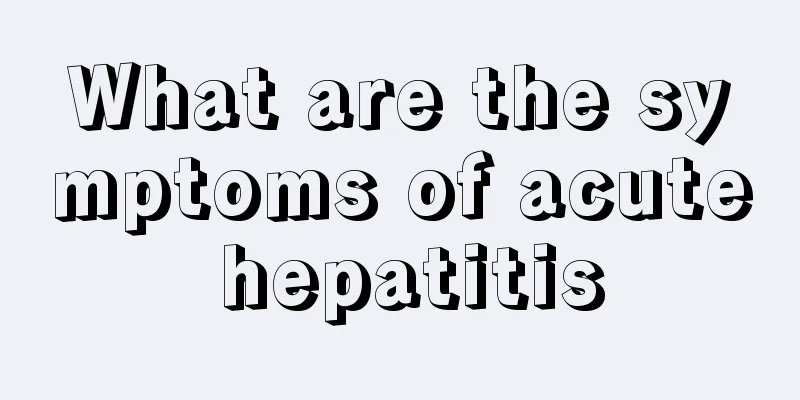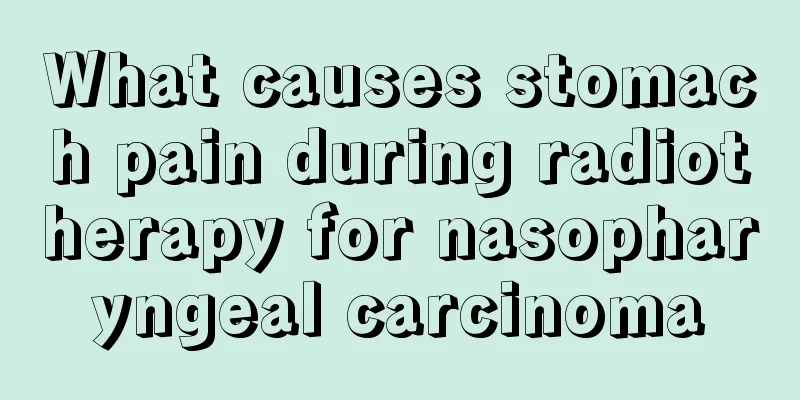What are the symptoms of acute hepatitis

|
Acute hepatitis has an acute onset and obvious symptoms. If hepatitis occurs, the patient must go to a regular hospital for a comprehensive examination and isolation as soon as possible, and take medication on time and according to the course of treatment, then the acute hepatitis can be cured. However, if treatment is not timely or medication is not used properly, acute hepatitis will turn into chronic hepatitis and it will be more difficult to cure. Let's take a look at the symptoms of acute hepatitis, which can help us treat it as early as possible. Acute hepatitis is a relatively common liver disease. There is a saying that goes "three parts treatment and seven parts care". For hepatitis patients, they should pay attention to rest and adjust their diet structure during the illness. The diet should be fresh, easy to digest, and contain a certain amount of protein. So do you know the symptoms of acute hepatitis? Let’s take a look below. Acute hepatitis symptoms Patients will experience low fever, general fatigue, loss of appetite, accompanied by nausea, vomiting, aversion to greasy food, discomfort in the liver area and yellow urine, and there will be no improvement after rest. Patients will experience low fever, general fatigue, loss of appetite, accompanied by nausea, vomiting, and aversion to greasy food. Acute anicteric hepatitis 1. This type is more common, with milder symptoms, including general fatigue, loss of appetite, nausea, abdominal distension, etc. Physical signs include enlarged liver, soft texture, tenderness and percussion pain. This type of hepatitis has mild symptoms and is often overlooked. The course of the disease is about 2-3 months. 2. Sometimes the severity of the disease varies, and the severity of symptoms or signs also varies. 3. Acute severe hepatitis, also known as fulminant hepatitis. The clinical features are acute onset, with impaired consciousness, bleeding, jaundice and liver shrinkage within 10 days. The duration of illness does not exceed 3 weeks. The manifestations of fulminant hepatitis are similar to those of acute icteric hepatitis, but the disease progresses rapidly and a severe diagnosis should be considered. Acute icteric hepatitis 1. Pre-jaundice The disease usually starts slowly, with mild fever or no fever, and joint pain and rash are often present. Common symptoms include fatigue, loss of appetite, aversion to greasy foods, nausea, vomiting, and sometimes abdominal pain and diarrhea. This phase lasts an average of 5-7 days. 2. Jaundice stage The fever subsides, the subjective symptoms are slightly alleviated, and jaundice appears on the sclera and skin, reaching a peak within a few days to 3 weeks. Dark yellow urine may cause transient lighter stools. Pain in the liver area, enlarged liver, soft texture, tenderness and percussion pain. This phase lasts 2-6 days. 3. Recovery period Jaundice gradually decreases and subsides, stool color returns to normal, skin itching disappears, appetite improves, physical strength recovers, and gastrointestinal symptoms are alleviated. The disease generally lasts 1-2 months. |
<<: What is the normal value of creatinine
>>: What are the symptoms of hepatitis C
Recommend
What should you pay attention to in preventing bladder cancer? Could urinary pain be caused by bladder cancer?
Bladder cancer is the most common tumor in the ur...
What are the dietary taboos for invasive breast cancer
From the existing medical literature, there are i...
How to remove oil stains from white clothes
Many friends usually prefer to wear white clothes...
What are the functions and effects of black Bian stone
Black Bian Stone is actually a kind of stone that...
One cheek is sunken
Face is very important to all of us, it is our ap...
How to prevent the harm of haze to human body?
With the continuous development of modern industr...
What to do if the car tire pressure is too low
Nowadays, people's technological power is bec...
Can Epstein-Barr virus antibodies be used to screen for nasopharyngeal carcinoma?
It is a DNA virus first discovered in Africa and ...
What are the dangers of testicular cancer
Testicular cancer usually occurs in young men. It...
How to relieve allergic rhinitis?
The change of seasons is the most difficult time ...
What are the benefits of waist care?
The waist is an important part of the human body ...
Cost of esophageal cancer stent surgery
Stent treatment of esophageal cancer is a common ...
What's wrong with my head aching?
Many people may wonder what is causing the dull h...
When is the best time to take a bath?
Taking a bath is very beneficial to your health. ...
Men eating 1 to 2 tomatoes a day can help prevent prostate cancer
Lycopene in tomatoes has a strong antioxidant eff...









